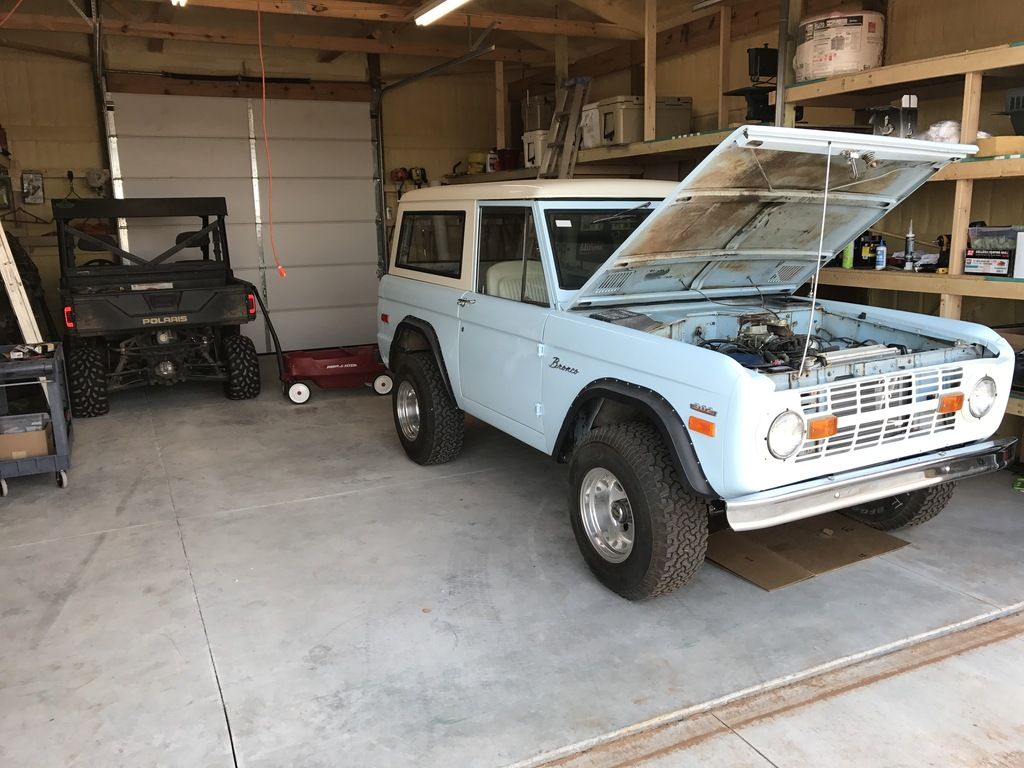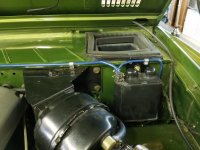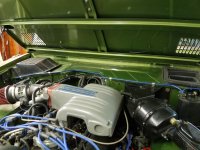Nice looking rig! How long have you had it? Looks like a friend's dads Bronco that he sold not long ago, but I think that one was a '73 and it would not have been half apart I don't think.
Anyway, nice looking Bronco.
I don't think it was clogged. When I lifted the tank up (it is laying down in the bed from previous owner), the gas would empty.
1. Why did it fill up with fuel, I didn't think that was supposed to happen, that it was collecting vapors only.
Well let's revisit this question now that you've answered it yourself after giving the rest of the pertinent information.
No, it's not supposed to fill up with liquid. But when it's laying on the floor instead of being mounted upright and higher, of course it's going to fill up.
Laying on the floor it's only a couple of inches higher than the gas in the (full) tank. Laying on the floor it can't drain back.
There. Mystery solved...
It can't collect and condense vapors and return liquid when the drain-back line is at the same level as the vapor lines anyway.
One other note, when i open one gas cap there is a vacuum pressure release. When I open the other, there is no pressure release.
Which cap? Front or rear tank?
And which is it? Vacuum, or pressure? Does it suck in when you open the cap, or does it blow out?
If it sucks in then your gas cap is defective and your vents are not doing their job.
If it blows, then your vents are not doing their job.
Since the venting system is at least partially modified (the tank laying on it's side down low with liquid in it) then perhaps the other issue is just as simple as putting it back to where it was.
Did the PO say why they took it out in the first place? Usually they start leaking around the top seam and vent fumes into the cabin after each fill up. But if it had a split seam, you would think it would have been dumping liquid gasoline out the crack at some point.
So it's a mystery still. And of course now your plastic lines are old and hard and need replacing. I would think that in a pinch you could use fuel hose of the proper size to at least splice the remaining good plastic with the metal lines? Not sure how much you have left, or if they're breaking off at the tank.
If at the tank, you might have to get creative and perhaps use some steel line that fits into the tank instead of those permanently crimped plastic doohickeys they used.
I think a better idea though (no pun intended) would be to simply get rid of the condensing tank and steel pancake style charcoal canister on the frame, and convert your system to the '76 and later style where the single charcoal canister was mounted up higher on the firewall in the engine compartment instead, and the in-cab tank was eliminated completely.
The only other thing that was changed that I know of was the addition of an anti-rollover valve (or a rollover valve?) to keep gas from going up to the canister if the vehicle rolled. Otherwise it would have a very hard time ever reaching the tank under normal circumstances. Which is the whole reason for the condensing tank in the cab in the first place.
There is a discussion that should be right here on the first page about a guy doing just that. His is now mounted on the driver's side firewall top, but the factory ones were on the passenger side. But either works, just as long as the canister is higher than the old ones were.
Good luck.
Paul





















